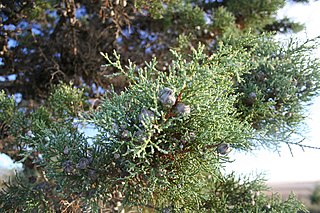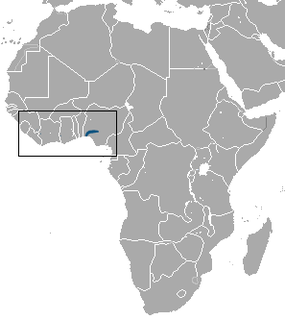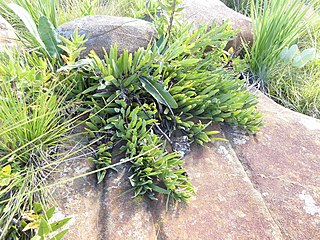
The International Union for Conservation of Nature (IUCN) Red List of Threatened Species, founded in 1964, is the world's most comprehensive inventory of the global conservation status of biological species. It uses a set of precise criteria to evaluate the extinction risk of thousands of species and subspecies. These criteria are relevant to all species and all regions of the world. With its strong scientific base, the IUCN Red List is recognized as the most authoritative guide to the status of biological diversity. A series of Regional Red Lists are produced by countries or organizations, which assess the risk of extinction to species within a political management unit.

Podocarpus totara is a species of podocarp tree endemic to New Zealand. It grows throughout the North Island and northeastern South Island in lowland, montane and lower subalpine forest at elevations of up to 600 m.

Cypress is a common name for various coniferous trees or shrubs of northern temperate regions that belong to the family Cupressaceae. The word cypress is derived from Old French cipres, which was imported from Latin cypressus, the latinisation of the Greek κυπάρισσος (kyparissos).

A species that is extinct in the wild (EW) is one that has been categorized by the International Union for Conservation of Nature as known only by living members kept in captivity or as a naturalized population outside its historic range due to massive habitat loss.

The eastern long-eared bat, species Nyctophilus bifax, is a small flying mammal, a vespertilionid bat. It is found in eastern Australia and Papua New Guinea.

Hardwicke's woolly bat is a species of vesper bat in the family Vespertilionidae.
The Sichuan partridge is a bird species in the family Phasianidae. It is found only in China where it is classified as a nationally protected animal. Its natural habitat is temperate forest. It is threatened by habitat loss.

Deckenia nobilis is a species of flowering plant in the family Arecaceae. It is monotypic within the genus Deckenia, and is endemic to the Seychelles, where it is threatened by habitat loss. It was described in 1870.

Crocidura grandiceps is a species of mammal in the family Soricidae. It is found in Benin, Ivory Coast, Ghana, Guinea, Liberia, Nigeria, and Togo. Its natural habitat is subtropical or tropical moist lowland forests. It is threatened by habitat loss due to agriculture and aquaculture as well as logging and wood harvesting. To increase habitat protection for the C. grandiceps, in-place land/water protection conservation actions are in place. The vernacular name large-headed shrew is sometimes applied to C. grandiceps but has also been used for the entire related genus Paracrocidura. The IUCN List categorizes the C. grandiceps as Near Threatened as of 2008.
Bulbophyllum filiforme is a species of epiphytic plant in the family Orchidaceae, found in Cameroon and Nigeria, where its natural habitat is subtropical or tropical dry, lowland evergreen forests. It was botanically described in 1895, and is currently threatened by habitat loss due to the clearing of forests for the establishment of plantations and other agricultural ventures. B. filiforme is the basionym for Vermeulen's treatment of it as Bulbophyllum resupinatum var. filiforme(Kraenzl.) J.J.Verm.

Helicia is a genus of 110 species of trees and shrubs, constituting part of the plant family Proteaceae. They grow naturally in rainforests throughout tropical South and Southeast Asia, including India, Sri Lanka, Indochina, Peninsular Malaysia to New Guinea and as far south as New South Wales.
Uvariodendron anisatum is a species of plant in the family Annonaceae. It is endemic to Kenya. It is threatened by habitat loss.

Uvariodendron is a genus of plants in the family Annonaceae.
It contains the following species :

Uvariodendron connivens is a species of plant in the family Annonaceae. It is found in Cameroon and Nigeria. It is threatened by habitat loss.
Uvariodendron fuscum is a species of plant in the family Annonaceae. It is endemic to Cameroon. Its natural habitat is subtropical or tropical dry forests.
Uvariodendron giganteum is a species of plant in the family Annonaceae. It is found in Cameroon and Gabon. Its natural habitat is subtropical or tropical moist lowland forests. It is threatened by habitat loss. Plant is a forest tree up to 30 ft. high. Flowers yellow and purple within.
Uvariodendron kirkii is a species of flowering plant in the family Annonaceae. It is found in Kenya and Tanzania.
Uvariodendron pycnophyllum is a species of plant in the family Annonaceae. It is endemic to Tanzania.

Protea parvula, also known as the dainty sugarbush, or kleinsuikerbos in Afrikaans, is a small flowering shrub belonging to the genus Protea.











